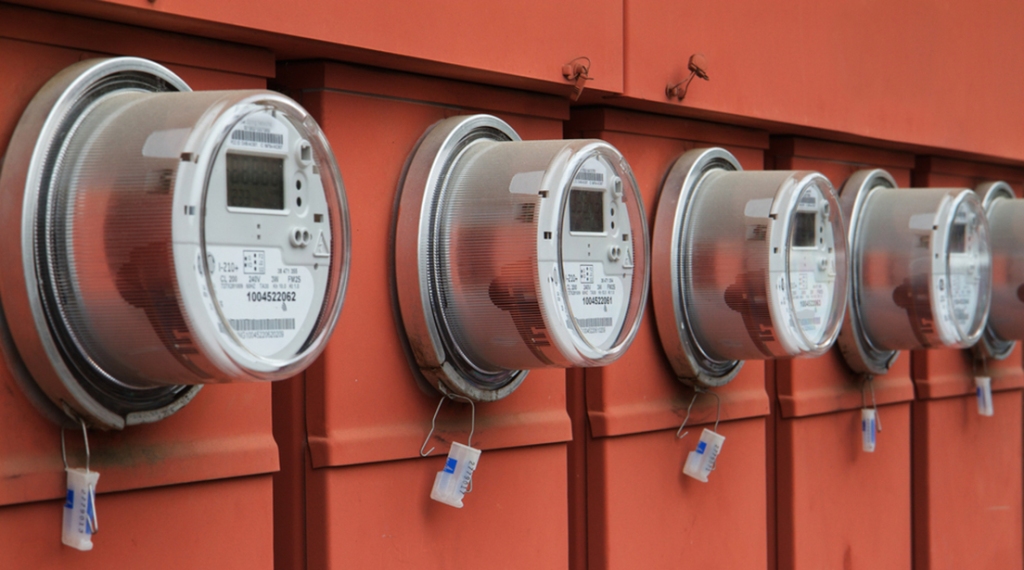Renewable energy continues its technological march. New developments in solar panels grab headlines almost daily, and energy conversion rates increase regularly – but there is a limit to what we can do with solar panels until battery technology improves as well.
Sadly, batteries have remained relatively unchanged for decades, but that’s all about to change.
The Battery Bottleneck
Consider the size of your phone. It doesn’t matter if you have the latest and greatest smartphone, an old flip phone or something in between. The battery remains the largest component within, thus dictating the overall size, weight and thickness of any mobile device.
An iPhone might just be the most advanced mobile technology – all crammed into a millimeters-thick brick. But if you were to crack it open, you’d see a minuscule circuit board next to a comparatively massive battery.
And it’s gotta be that big because we need all that juice to run those trillions upon trillions of calculations every day. Who knew swiping through Tinder or flicking down your for-you page on TikTok required so much energy?
But, what if a battery’s energy capacity wasn’t so directly tied to the battery’s size?
What if the battery became the smallest component in your phone? And what if there was an energy-dense battery capable of running your entire house at night?
We may be seeing that mystical-sounding battery sooner than you might think…
Emerging Battery Breakthroughs
Is it possible that tree-huggers were on to something? And could it be that the answer was in our walls (and fireplaces) for hundreds of years?
Wood Batteries
How on earth could wood become a battery? It can’t even conduct electricity!
You’re right to question the logic of wood batteries. We’ve historically used caustic chemicals and precious metals to store and conduct energy. Alkaline, lithium ion, and nickel cadmium are all relatively toxic materials. So why are researchers looking at wood as a potential lightweight battery solution?
It’s simple, really… Trees.
Have you noticed the similarity between photovoltaic solar-panel cells and leaves on a tree?
We have yet to crack artificial photosynthesis, but the photovoltaic process is a good first step. And the logical next step is identifying how trees store that energy.
Surprise, surprise, it’s in the tree’s wood.
“The researchers noted that wood fibers are naturally designed to hold mineral-rich water, water that is very similar to the electrolyte in batteries,” explains CleanTechnica.
Wood batteries can be significantly lighter and more pliable than the rigid, heavy contemporary batteries. And the experimental wood batteries are already showing great promise in charge cycles.
The prototype is already “successfully lasting through a full 400 charge-discharge cycles.” For comparison, a lithium ion battery, like the one in your phone, lasts through 300-500 charge-discharge cycles.
3D-Printed Batteries
While this technology is still in its infancy, 3D printing is already showing promise in rapidly prototyping new ideas.
Current 3D printers operate by extruding two-dimensional layers upon layers of a substance that stacks up to create a three-dimensional object.
What started with at-home hobbyists printing simple trinkets is now evolving to print more complex items – like batteries!
Researchers from Lawrence Livermore National Laboratory are using a novel approach to 3D-print nearly microscopic layers of aerogel.
Carbon nanotube aerogels, known as “hard smoke,” are used to print a tight graphene geometric design. This results in a structure that may one day function as a battery.
The old guard in the battery game, lithium ion, has a tendency to degrade quickly. As evidenced by the 300-500 charge-discharge cycle lifetime limit on most conventional batteries.
Graphene may help the stability and extend the longevity of these batteries. So while a 3D-printed graphene-aerogel battery may be years off, graphene-integrated lithium batteries are already in development at Tesla.
Tesla’s Game-Changing Powerwall Home Battery
In April of 2015, Elon Musk announced Tesla’s plans to release a much-needed missing piece to the solar-energy puzzle.
“We have this handy fusion reactor in the sky called the Sun,” Musk said to a rowdy crowd during his keynote presentation. “We don’t have to do anything, it just works. [It] shows up every day, and produces ridiculous amounts of power.”
This is information many of us may already know. However, we are aware of the current limitations of solar panels. Chief among them is that they don’t work so great (read: at all) at night.
So maybe we could use rechargeable batteries to harness the excess power generated during the day for use when it’s cloudy or at night. But so far there hasn’t been much of a ready-made product that would tackle that problem.
“The issue with existing batteries is that they suck… They’re expensive, they’re unreliable, they’re sort of stinky, ugly, bad in every way. They’re very expensive… There’s not one integrated place you can go and buy a battery that just works, which is what people really want to buy,” Musk told the packed auditorium. “That’s the missing piece, that’s the thing that’s needed to have a proper transition to a sustainable energy world.”
And Musk believes he’s found a solution to that problem. That missing piece.
You may recall news of Tesla teaming up with Panasonic to create the massive Nevada Gigafactory. The zero-energy footprint factory is deep in construction and looking to start operations in 2016. Once operational, Musk predicts the factory’s output will be 50 GWh in annual battery production by 2020.
Tesla acknowledges that there’s a problem with current feed-in tariff plans across the nation. The grid is old, like over-a-century old in many cities. The wiring cannot handle a rush of additional energy sent back to the utilities.
This means that as more consumers adopt rooftop solar panels for personal energy production, the more selling back excess energy will cause strain to this ancient electrical grid.
Tesla plans to release home-grade, business-grade and utility-grade battery solutions to contain all that excess energy and prevent grid overload.
The home-grade Tesla Energy Powerwall battery comes with a capacity of 10KWh starting at $3,500. That sum is the cost to the installer not including the subsidies that may very well decrease the cost to the end user.
Bloomberg Business summarizes the April 30, 2015 Elon Musk announcement below:
The Battery Our Future Deserves
Battery technology lagged behind computational processor advancements for decades. Now it appears that is set to change.
The next two decades will bring battery advancements closer to the future promised by our exponentially growing computer processing power.
It’s not clear which new battery technology will become the industry standard – but it should be comforting to know there are multiple highly advanced technologies already in the research phase, and in the case of Tesla’s Powerwall, available for order.






